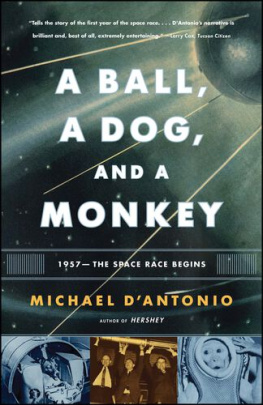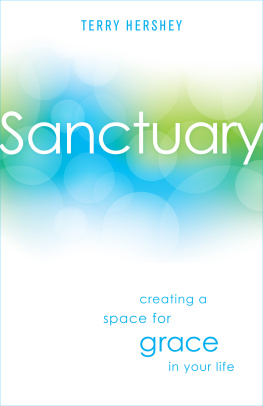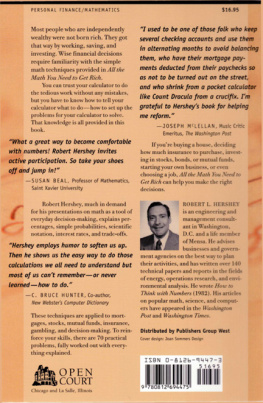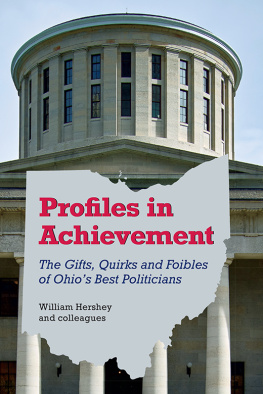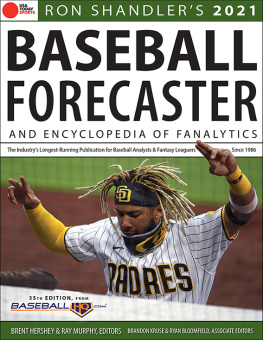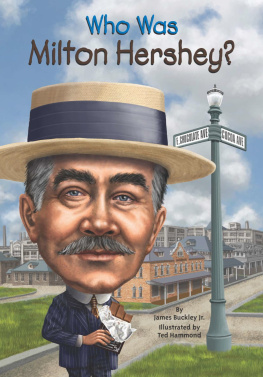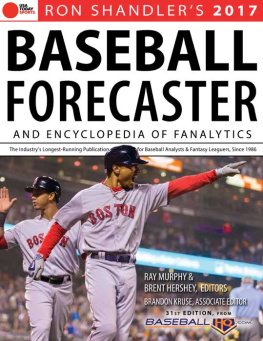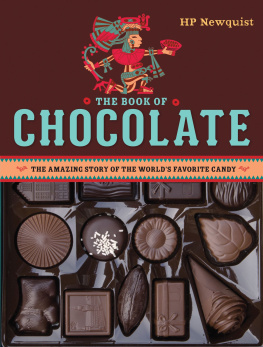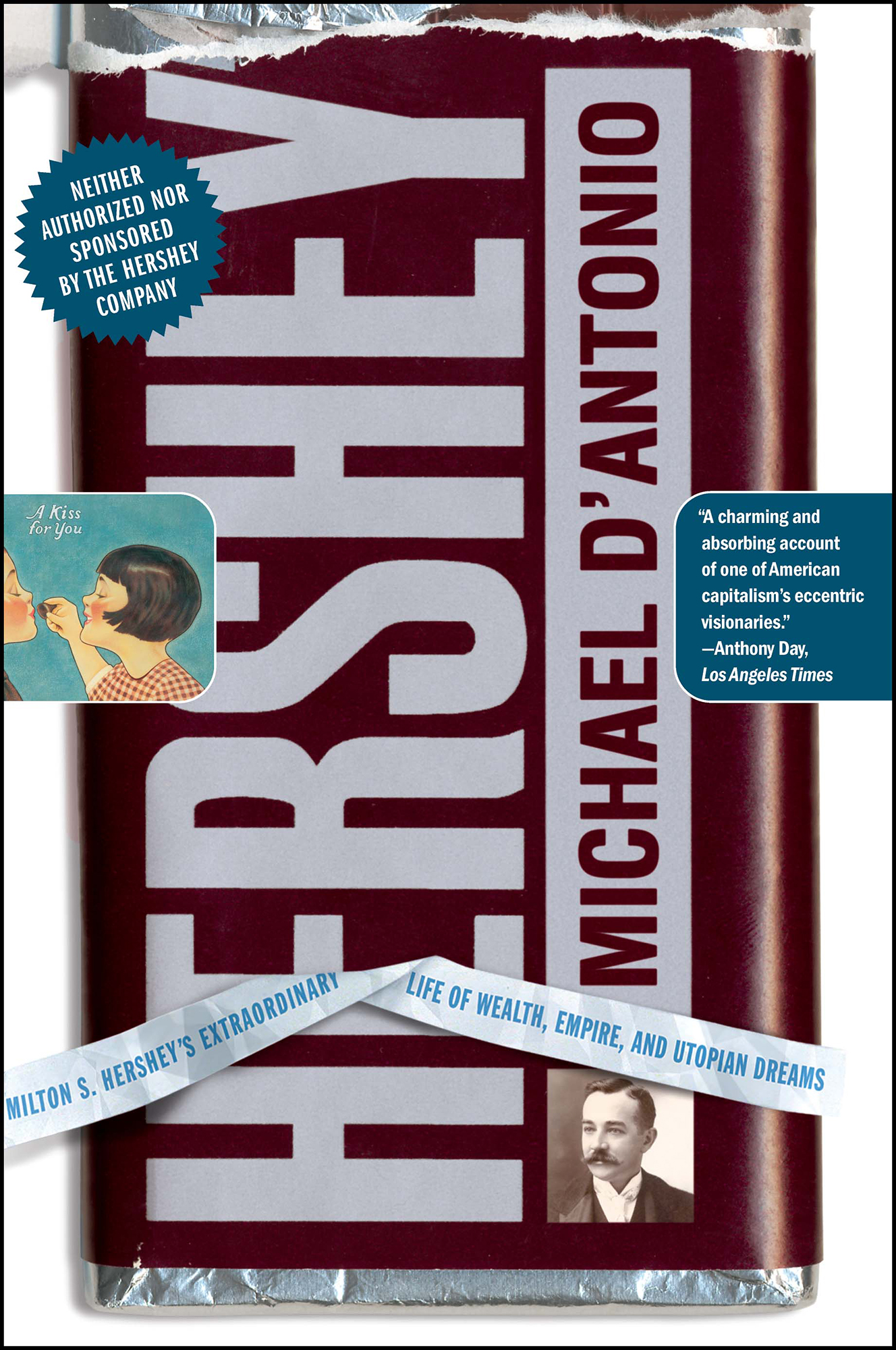Thorough and highly readable It is the great charm of DAntonios book that he will not plunk entirely for one judgment or the other. Its the man hes after, not the god.
DAntonios biography is thorough and fair. Hershey is a valuable addition to the literature of American business and philanthropy.
A richly detailed biography of the founder and an absorbing history of the Hershey company.
DAntonios captivating book is, in fact, as much a biography of the town as it is of the man who built it on Lebanon Valley farmland and forest in 1903 to support his new chocolate factory unfolds much like a good novel.
Wonderfully written, carefully researched, and full of remarkable stories a historical page-turner, at once instructive and engaging, Hershey is about a lot more than chocolate.
Michael B. Katz, Walter H. Annenberg Professor of History, University of Pennsylvania
DAntonio offers a balanced and genial look at the man who brought America the five-cent chocolate bar and founded a utopian village. This volume will satisfy all.
Wide-ranging social history underpins a well-told, balanced account of the candy man, his business, and his milieu.

A silver loving cup, presented to him by his employees in 1913 at the celebration of his towns tenth anniversary, became one of Milton S. Hersheys most treasured possessions. At the same celebration he heard The Hershey Song, an anthem to his achievements.
For Toni, who makes my life sweeter than chocolate.
INTRODUCTION
Tourists who travel by carand more than four million come every yearoften start at the landmark Hotel Hershey, which occupies a ridge that rises more than a hundred feet above the Lebanon Valley in central Pennsylvania. Its a Moorish-style fortress with ornamental towers and a green tile roof. The view from its veranda is the best one available. To the south a scene that looks like a model railroad display comes to life. Cars speed along smooth asphalt highways. Lush cornfields give way to a color-splashed amusement park with ten roller coasters, a Ferris wheel, and a snaking monorail. Beyond the neon and flapping pennants stand old factory buildings, church spires, and houses. Every once in a while a freight train will snake its way along the tracks that slice through the valley.
A drive into town on Sand Beach Road, which becomes Park Avenue, takes you along the east flank of the park. The double-track roller coasterninety feet high at its tallest pointis so close to the road that a falling cap could land on your car. Farther along, on a quieter, shady stretch of road waits a small zoo, which is set beside a pristine little creek. Park Avenue then takes a sharp turn and climbs up and over a bridge that crosses railroad tracks. On the other side you are suddenly deposited in another place and time.
In downtown Hershey, the streetlights are shaped like giant Kisses candies. A century-old factory made of soft red brick sprouts a pair of giant smokestacks decorated with the letters H-E-R-S-H-E-Y. The emerald fairways of a golf course stretch out from the factory lawn. Across the avenue, gracious old houses, some dating from 1905, occupy carefully manicured properties.
All of Hershey, including the zoo, the antique town, the amusement park, the playful streetlights, and even the factory, is clean and neat and cheerful. Even the names of the major streetsChocolate Avenue and Cocoa Avenuebring a smile to a visitors face. And thats before he stops, gets out of the car, and realizes that the air in this Willy Wonka place smells like sweet cocoa. Hershey always smells like this. On a humid summer day when there is no breeze its so strong you can taste it.
In this town of 13,000 souls, business people and civic boosters promote an image of kindhearted contentment. Squabbling is bad for business, and the main businesses in little Hersheytourism and candyrack up sales in excess of $5 billion per year. For this reason, the great howl of protest that erupted in Hershey in the summer of 2002 drew reporters and TV news crews from around the world.
It all started with small groups of worried citizens meeting in living rooms and kitchens. Then townspeople noticed handmade signs tacked to light poles, staked on lawns, and taped onto shop windows. Some said, Derail the Sale. Others warned, Wait til Mr. Hershey finds out!
The object of these protests was the Milton Hershey School Trust, which held controlling interest in the famous chocolate company for the benefit of a residential school for needy children. The stock was worth as much as $10 billion and the trust was planning to sell it to the highest bidder. Fifty-seven years earlier, when founder Milton S. Hershey died, the trust guaranteed that local residents who shared a common sense of purpose and community would run the company and protect the economy of the town. If the stock was sold, the chocolate-making firm that had represented the playful and prosperous spirit of the community for a century would pass from local control.
Worried conversations about the sale quickly led to an organized opposition. Finally, on a scorching hot Friday in August, more than five hundred citizens marched through downtown waving placards and shouting while police looked on.
This being Hershey, when the people took to the streets they were careful to dress nicely and walk with care, avoiding damage to private lawns and public gardens. Younger protesters kept a kind eye on the elderly marchers to make sure they didnt suffer in the heat. Nobody cursed. Nobody threw a punch, a bottle, or a scrap of litter.
But as mild mannered as the demonstration was, it was also a sign of deeply felt worry. Never in the towns history had such a varied group united behind a single cause. The opposition included many retired Hershey company executives, including the silver-haired former chairman of the board, Richard Zimmerman, who stood to earn a fortune on his stock if the sale went forward. The retired executives were joined by union workers who stood with alumni of the Milton Hershey School. Men who once designed ad campaigns for Hershey bars developed antisale propaganda. Schoolchildren marched beside doctors, lawyers, and local politicians.
At a rally, alumni leader Ric Fouad shouted, Were not here to mourn, were here to mobilize! Onlookers waved placards that read, Power to the People! and Save Our Town!
The idea of selling the Hershey company was born of good intentions. Board members of the Milton Hershey School Trust, which held a controlling interest in what was formally called the Hershey Foods Corporation, had decided that the charitys dependence on the firms stock was unwise. American securities markets were in the middle of a long steep decline. Some major companiesWorldCom, Enron, etc.were collapsing in scandal and leaving investors with pennies on the dollar. Looking at the perilous markets, the board members secretly decided to sell the trusts stake in Hershey and invest the windfall in a more diverse portfolio.

